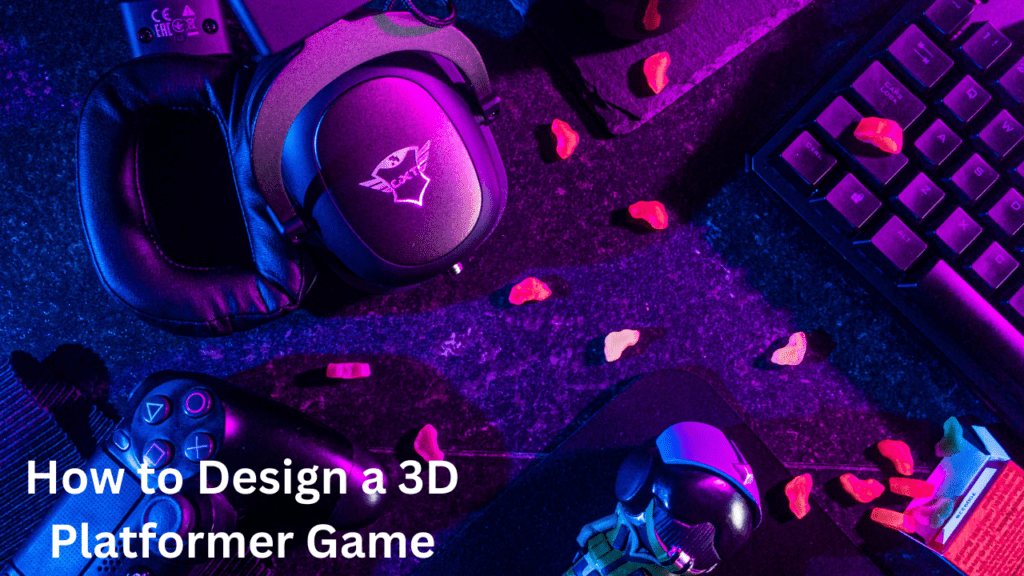How to Design a 3D Platformer Game: A Comprehensive Guide
Designing a 3D platformer game is an intricate process that demands careful planning, creativity, and attention to detail. This comprehensive guide will walk you through each step of creating a captivating 3D platformer game, from the initial concept development to the final execution.
1. Concept and Inspiration:
- Game Theme and Setting: Define the game’s theme and setting, establishing the atmosphere and context for your platformer adventure.
- Character Design: Create a memorable protagonist with unique abilities, appearance, and backstory.
- Core Gameplay Mechanics: Decide on the fundamental gameplay mechanics, such as jumping, running, climbing, and item collection, to form the foundation of your game.
2. Level Design:
- Storyboarding: Sketch out the levels and their layout on paper, ensuring a logical progression of difficulty.
- Environmental Design: Craft visually stunning environments that complement the game’s theme and enhance the gameplay experience.
- Obstacle Placement: Strategically position obstacles, enemies, and interactive objects to challenge players and maintain their engagement.
3. Gameplay Mechanics:
- Character Abilities: Define the unique abilities and powers of your character that are essential for overcoming obstacles and puzzles.
- Physics Engine: Implement a realistic physics engine to ensure smooth and responsive character movement and interactions with the 3D environment.
- Camera System: Develop a user-friendly camera system that allows players to navigate the 3D space comfortably.
4. Game Progression:
- Difficulty Curve: Create a balanced difficulty curve that gradually increases as players progress through the game, starting with simpler challenges and introducing more complex ones.
- Unlockables and Rewards: Consider incorporating collectibles, power-ups, or new abilities that players can unlock as they advance, encouraging exploration.

5. Story and Narrative:
- Plot Development: Craft an engaging storyline that motivates players to continue their journey through the game’s rich narrative.
- Character Interaction: Incorporate non-playable characters (NPCs) or dialogue sequences to advance the plot and provide context.
6. Art and Graphics:
- Character and Environment Design: Bring characters and environments to life with 3D modeling and texturing, ensuring they align with the game’s visual style.
- Visual Effects: Enhance the game’s atmosphere with visual effects that provide feedback on player actions and interactions.
7. Sound and Music:
- Sound Effects: Include immersive sound effects for character movements, interactions, and environmental elements.
- Soundtrack: Compose or select music that complements the game’s theme, enhancing the player’s emotional experience.
8. Testing and Balancing:
- Quality Assurance: Conduct thorough playtesting to identify and rectify bugs, glitches, and gameplay issues.
- Game Balancing: Adjust the game’s difficulty, pacing, and mechanics based on player feedback to ensure an enjoyable experience.
9. User Interface (UI):
- Menus: Design user-friendly menus, including the main menu, settings, and options.
- HUD (Heads-Up Display): Create an informative HUD that displays essential information such as health, inventory, and objectives.
10. Optimization and Performance:
- Performance Optimization: Optimize the game’s code and assets to ensure smooth performance across various platforms and hardware configurations.
11. Marketing and Promotion:
- Building Hype: Develop a marketing plan to generate anticipation for your game through trailers, social media, and promotional materials.
- Distribution Strategy: Decide on the platforms where you’ll release your game, such as PC, console, or mobile, and plan your distribution strategy accordingly.
12. Launch and Post-Release:
- Launch Strategy: Coordinate a successful game launch, considering factors like release dates, pricing, and promotional events.
- Community Engagement: Interact with your player community, gather feedback, and consider updates or expansions based on player input.
Designing a 3D platformer game is a complex yet rewarding endeavor. It requires a multidisciplinary team of designers, artists, programmers, and sound engineers to bring your vision to life. By following these steps and staying dedicated to your creative vision, you can design a captivating 3D platformer game that provides players with an unforgettable gaming experience.
Also Check: The Power of Coding Bootcamps
